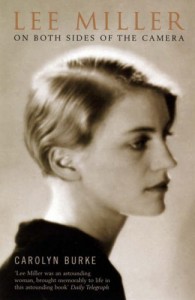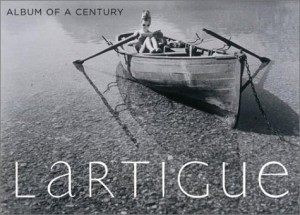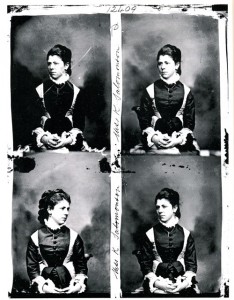Asked to provide information about my best-selling self-published book, I realised that I have nothing on my own blog about I Stopped Time. So here I am interviewing myself.
Where did you find your inspiration for ‘I Stopped Time’?
Reading a biography of Lee Miller, one of my heroines. I knew her photography but, as it turned out, very little of her life. She was an extraordinary, extraordinary person. One of the most sought-after fashion models of her day, who became a muse to surrealist photographers and artists such as Man Ray and Picasso. But she had always yearned to be on the other side of the lens and, in time, she became highly respected for her own work. At the outbreak of World War II she became dissatisfied with her fashion work and documented the Blitz for Vogue, then underwent yet another transformation to become the only woman in combat photo journalism in Europe, taking incredible personal risks. Lee also recorded the first use of napalm at the battle of St. Malo, the liberation of Paris, and she was there when the victims of Nazi concentration camps were liberated. Her personal relationships were never straightforward, but it a huge testament to the strength of her personality that all of her ex-lovers became friends. She eventually settled down in Sussex with the artist and curator, Roland Penrose, with whom she had a son, Anthony. He knew Lee as an embarrassing mother and had no idea of her history until, after she died, he discovered her collection of work. I found his comment that he was ‘cheated out of knowing someone really very extraordinary’ extremely poignant, and it set me on the road to discovering one of my main characters, Sir James Hastings.

The story is about a reclusive man in the autumn of his life who finds a way to forgive the mother who remained an absent figure for his entire life. He can’t do that on his own, because, in order to explain her absence in a time when nobody explained anything to children, he had set her up as the villain of his childhood. In comes a young student, Jenny Jones, who, let’s face it, is an unlikely friend, but, while he is trying to put up barriers, she recognises what they have in common and tears them down.
Other things, I stumbled upon along the way. One of the things that happened while I was writing a book that spans the period of the First World War was the death of Harry Patch. I had been deeply moved watching and reading about the histories of the last of the Veterans, and admired him greatly for his decision to speak out after so many years’ silence. After all that time had passed, you could still see how raw his emotions were.

Click here to buy
You’ve said before that photography is a passion of yours.
Absolutely. That’s one of the things that made I Stopped Time such a joy to write. Jacques Henri Lartique, a self-taught photographer whose collection spans over seven decades, kept intricate notes of his experimentation with what was still a new medium when he was given his first camera as a boy. They became my sourcebook. In fact, I was able to pull several of my passions together: photography, a relatively new-found interest in history. The book is dotted with some of the incredible people I found along the way, whose paths would have crossed with my main character’s. I’ve already mentioned Harry Patch. There’s also Florence Mills, the first black female international superstar, and Edith Hawkes who became better known as Sylvia Ashley, a real rags to riches story. Graveyards also feature.

Click here to buy
(Now something of a collector’s item, I picked up my copy for £20.00 at a photography exhibition)
Graveyards?
Graveyards and Gravestones. I am a huge fan of Victorian Cemeteries. Far from being morbid, I find them very peaceful places. I love the fact that you can find a person’s life history right there in front of you. Someone I discovered from her gravestone was Phoebe Hessel who became famous for disguising herself as a man because she could not bear to be separated from her lover when he joined the army. She outlived both him when she married and her second husband, living until the age of 108.

Why did you employ the use of two narrators?
I was keen to give a sense of how modern the mother, the elder of the two main characters, was when compared with her son. War stunted social development. People whose lives had been ravished by war wanted to cling to old traditions.
By layering the stories, I also wanted to give show the parallels between the lives of mother and son and of history repeating itself, as it so often seems to in families, even when they live apart.
I can’t really ignore the fact that, as a recipient of the Daily Mail First Novel Award, you have chosen to write about the Daily Mail in what some people may not consider to be a particularly flattering light.
My main concern was to be historically accurate. You can’t ignore the fact that the Daily Mail has a long record of sponsoring the arts, sciences and emerging technologies. There’s no doubt that Lord Northcliffe was a marketing genius, but it’s also true to say that without his indirect funding, some achievements either might not have happened, or would have happened far more slowly. Taking early aviation as an example, in 1906 he put up £1,000 for the first flight across the Channel and £10,000 for the first flight from London to Manchester. These ideas seemed so far-fetched that Punch said they would offer £10,000 for the first man who flew to the moon, but within four years both prizes had been won.
For her competition entry, Lottie experimented with a composite shot. Combining negatives was a controversial technique many believed was ‘cheating’. It would have been a risk for the Daily Mail to recognise that the not inconsiderable technical skill involved. I felt that this was in keeping with their support of emerging technologies.
The fact that my journalists were perhaps not the nicest people you might chose to meet was incidental. Without giving too much of the plot away, there wouldn’t have been much of a story if Lottie had simply entered a photography competition and won.
For me, some of the most poignant photographs of World War 1 were composites produced by the photographer, Frank Hurley, dubbed the ‘mad photographer’ for the enormous risks he took for his art. At the time, he was hired as an official war photographer, he was better known for his photographs of the Endurance’s failed expedition. Defending accusations that his images were ‘fake’ and ‘misleading’, he struck back saying that it was the only way to provide a true depiction of the sheer horror he encountered, and that he could only work within the limits of the technologies available at the time.
The shot that Lottie created was not a horrific image of war, but a dream-like scene, depicting her longing for home and the emotional turmoil she was undergoing.

Did your competition win influence your writing in any other ways?
Definitely. You might think that your reaction to winning a prize would be one of pure joy, but I found it was far more complex than that. It was actually quite humbling. Because I had very little publicity, I was able to deal with my emotions very privately, but I’ve become an addict to shows like the X Factor. You can see how winning a stage of the competition, when you have had a history of knockback after knockback from people who have told you that you’re not good enough, or that you shouldn’t set yourself up for disappointment by trying, can cause a physical collapse. I was able to lend those emotions to Lottie.
Writing about a photographer, did you see any parallels with authors?
Yes, when I was writing about the distance that Lottie feels from her work, when she says it’s hard to take any credit for it because it has an energy of its own. Lottie is also reluctant to talk about her photography, comparing it to a magician being asked to explain how he has performed a trick. I feel those things, as I imagine many authors do. One of the reviews that I am most proud of is from a photographer who said that the novel voiced everything she held inside her as a photographer. As far as I am concerned, that is the greatest compliment anyone could have paid me.


